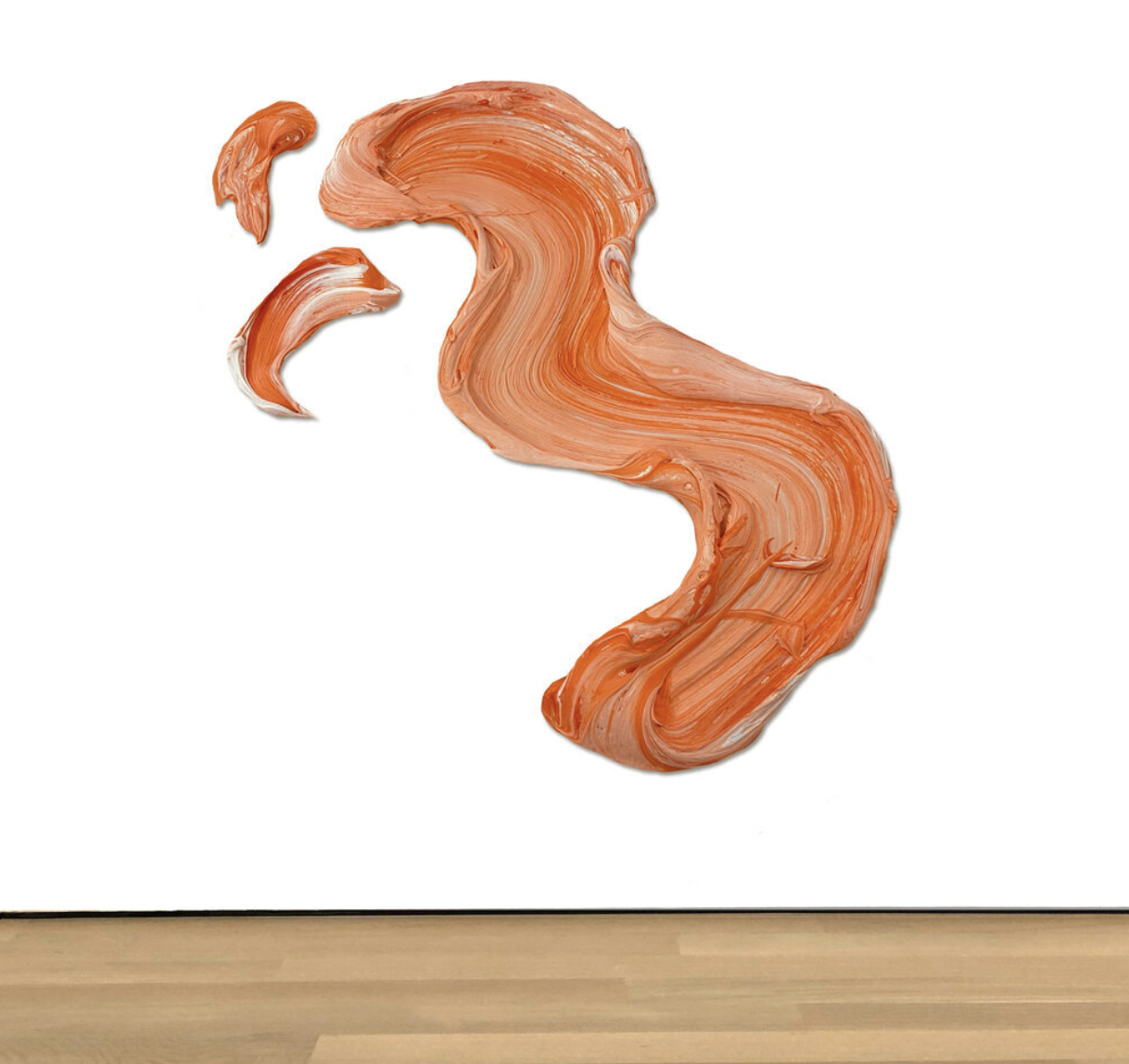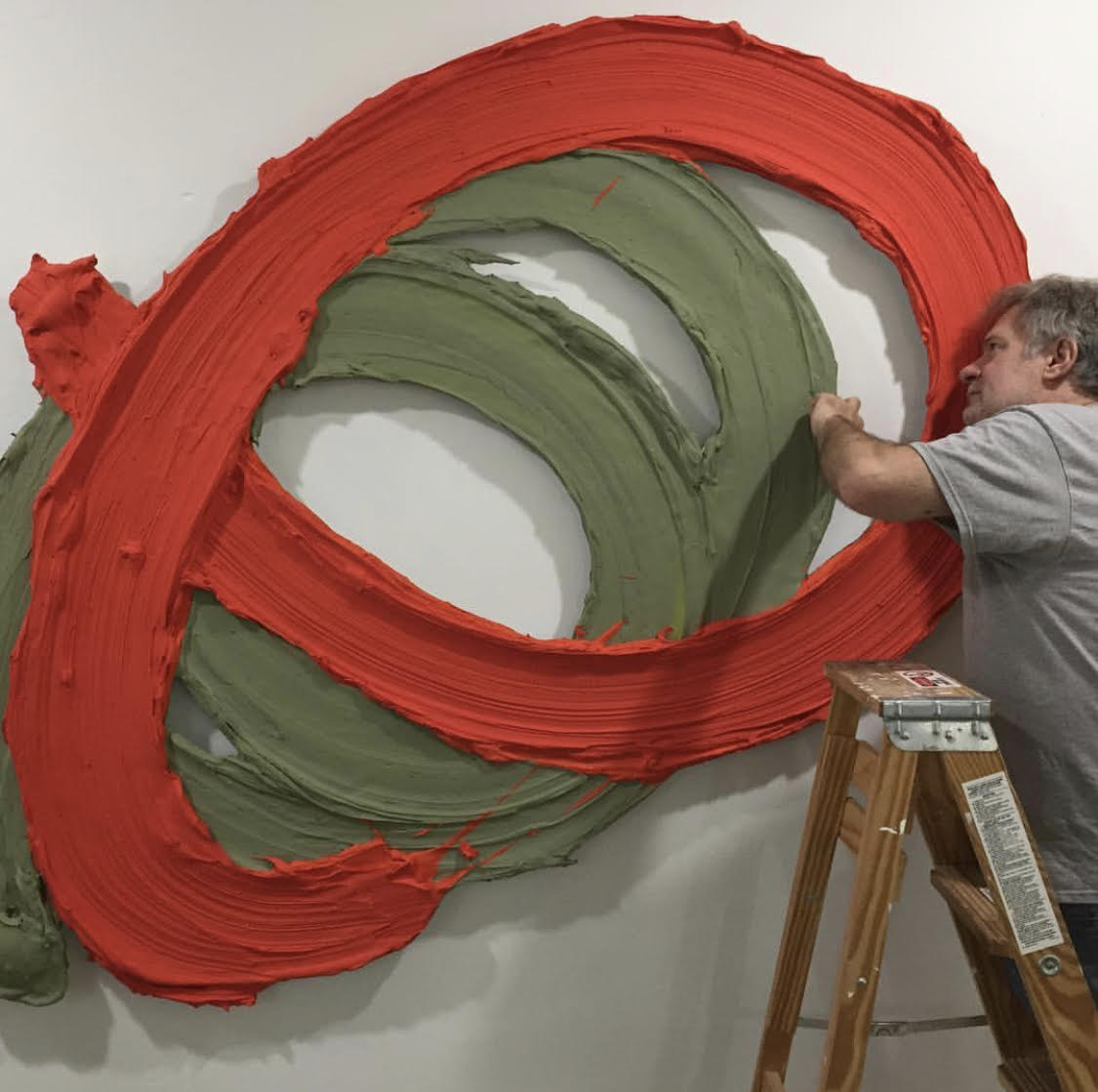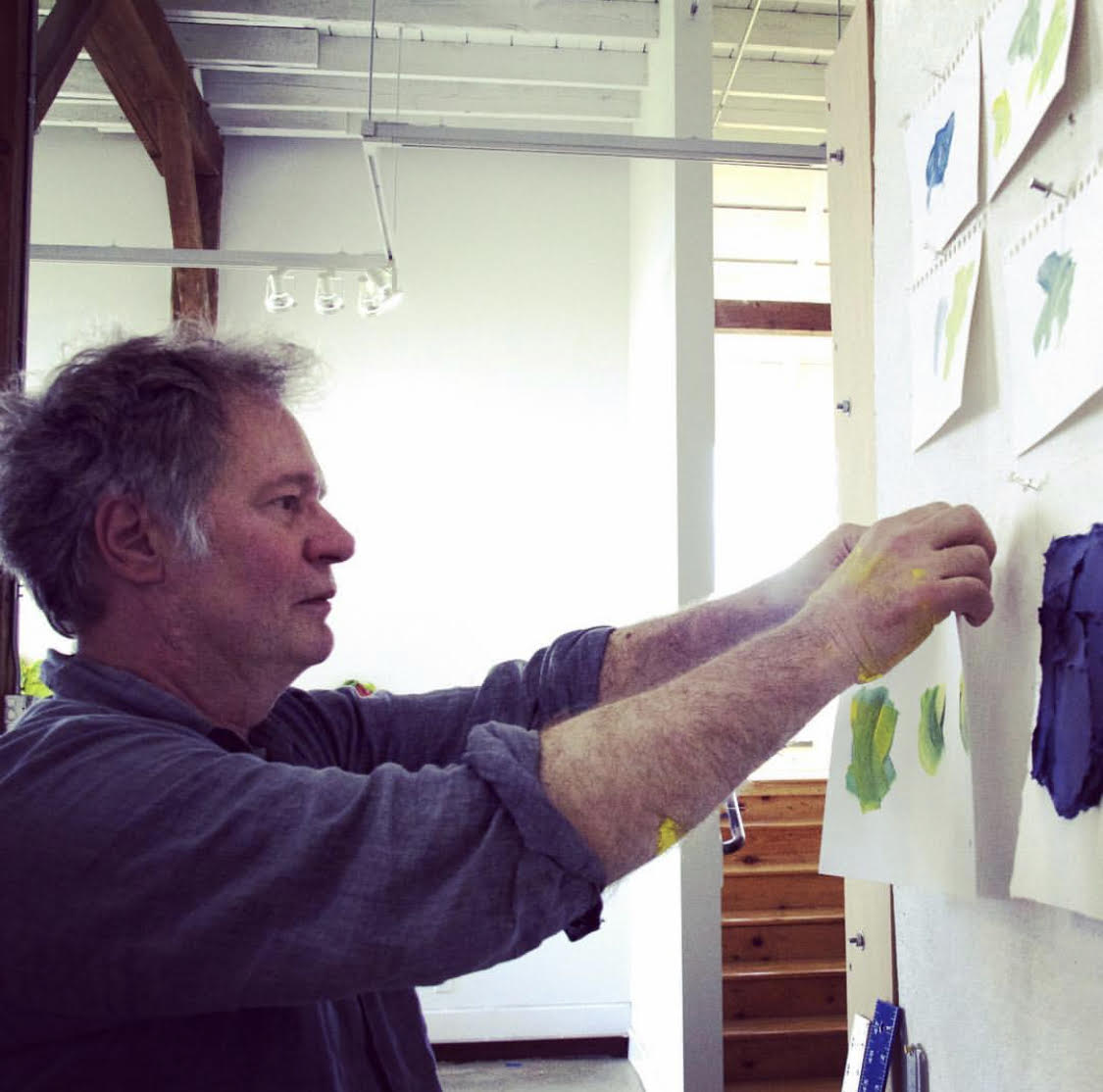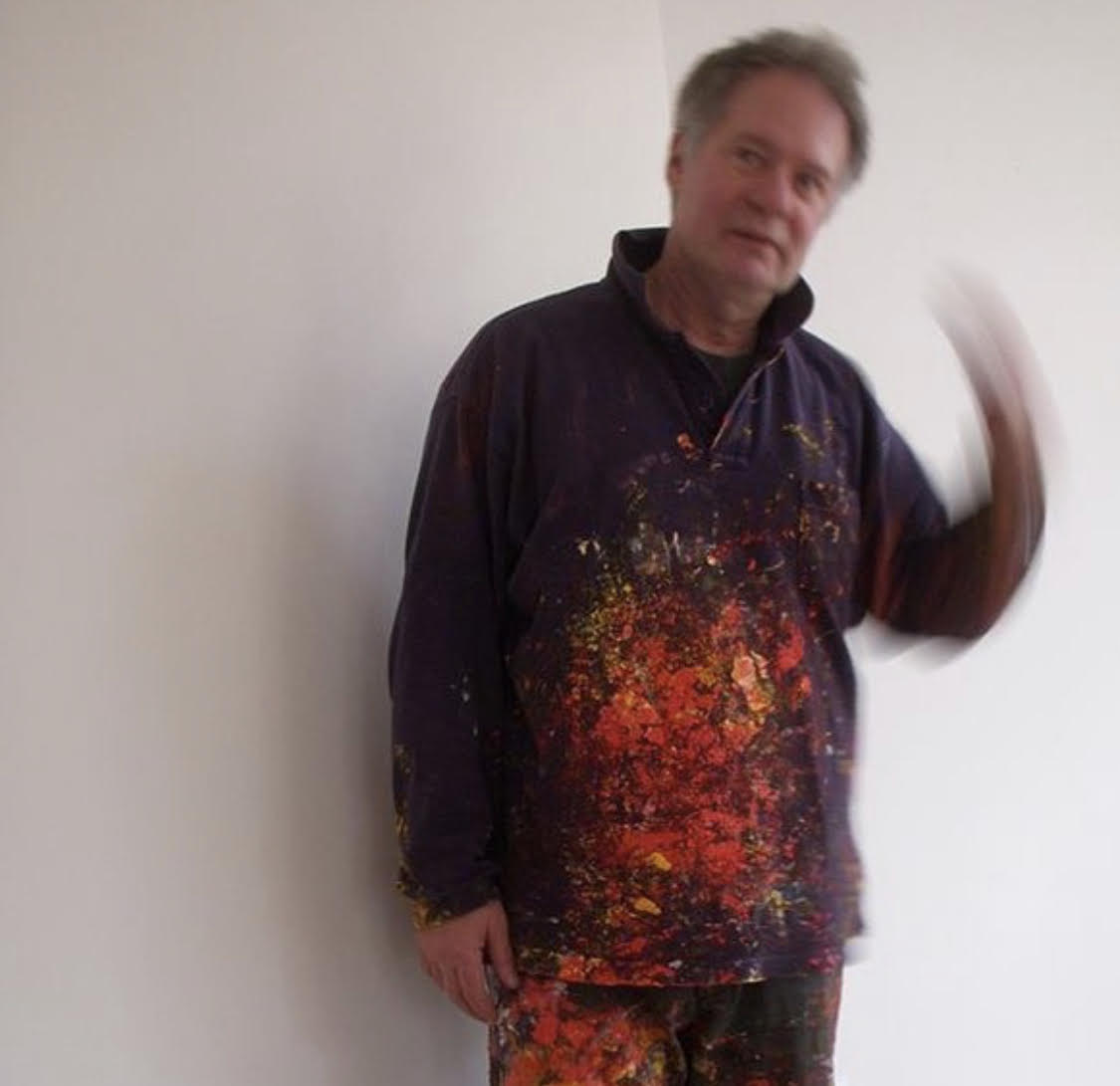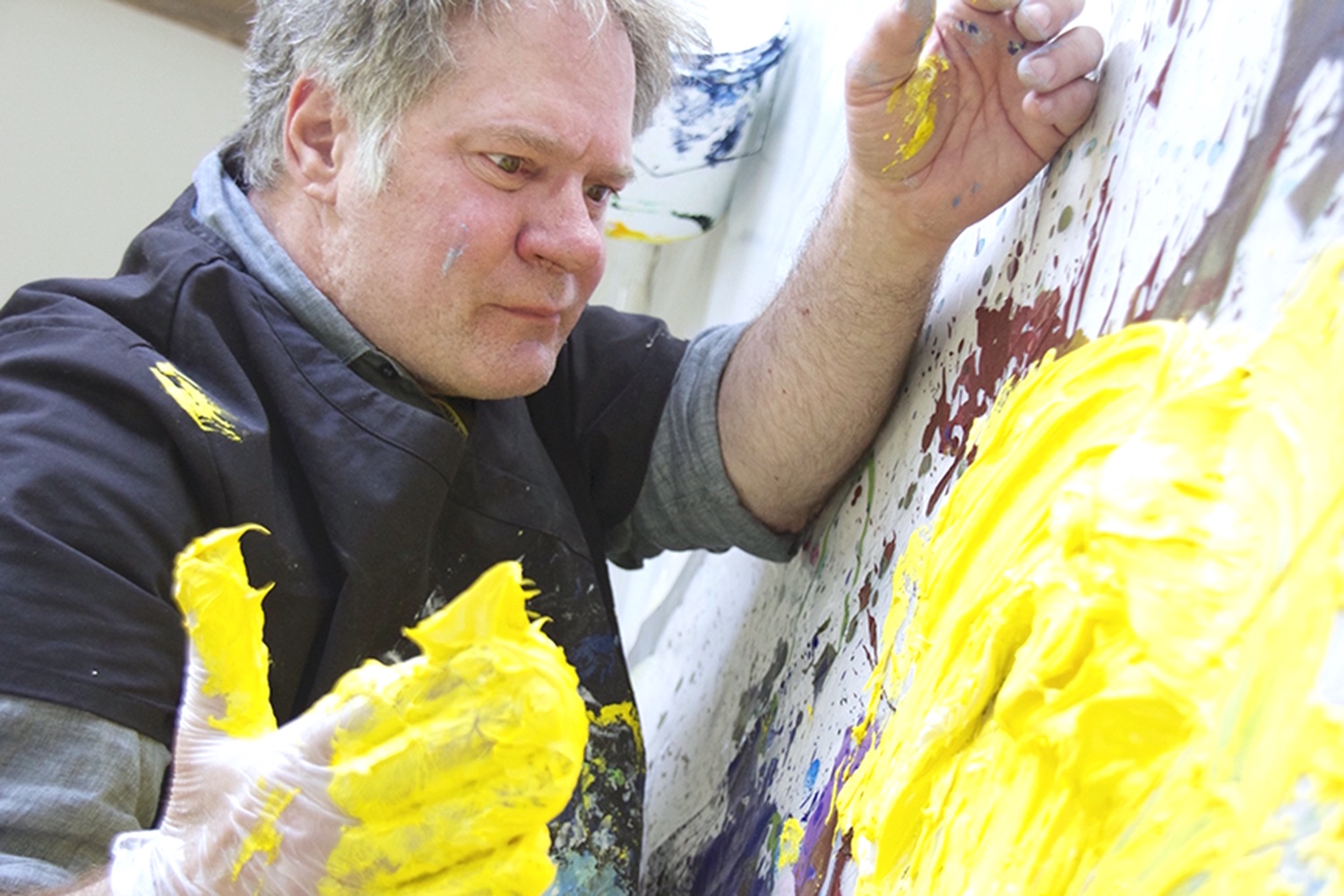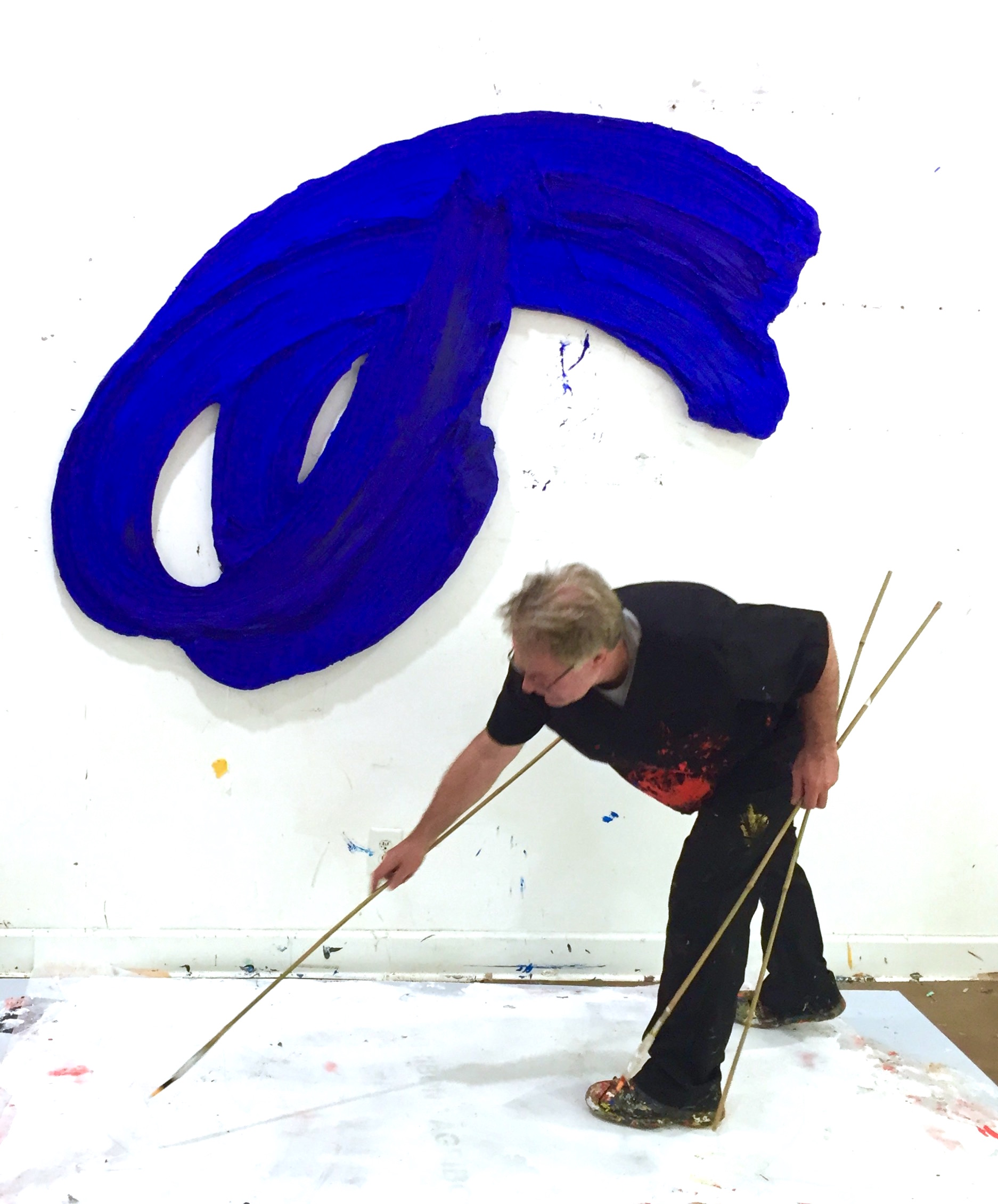Donald Martiny is an American Contemporary painter and fine artist, who is known for his use of color in his abstract paintings. His work has been exhibited nationally and internationally in art galleries and art spaces such as the Conny Dietzschold Gallery, the Cameron Art Museum, the Diehl Gallery, Market Art + Design Hamptons, and many more. His work is held in collections such as the Grahm Gund Family Foundation, One World Trade Center, the Newcomb Art Museum, and elsewhere. Martiny has lectured at Cornell University and at the Ackland Art Museum. His artwork has received press and been in publications internationally, most recently he has been featured in Architectural Digest. I had the pleasure and honor to ask Donald what has been his most challenging project as of yet, what drew him to making abstract art, and how he hopes people feel when they see his art.
UZOMAH: How do you approach the process of designing and creating artwork that you are asked to create?
DONALD: I keep a regular schedule in the studio working every day, seven days a week, from around 9:00 AM until 7:30 PM. I believe the best ideas and inspiration come from the work, the doing.
As I work I am in constant dialogue with the paintings and they tell me what to do. They ask questions, or present new opportunities and challenges. I am constantly pushing myself, my processes, my materials, and my abilities as an artist.
U: What has been the most challenging project you have worked on?
D: There have been many. One that is easy to talk about was when I was commissioned to make two monumental paintings to be permanently installed in the lobby of One World Trade Center in New York City. The two paintings were to commemorate the one-year anniversary of the opening of the building. Because the paintings were too large to pass through any of the doors in the building, we decided to convert the lobby into a studio space where I would make the paintings on site.
Prior to that, no one had ever watched me paint. Painting requires a lot of focus and concentration. The lobby of One World Trade Center receives nearly twenty-five thousand visitors each day. That was a big challenge for me. Additionally, I only had a limited amount of time to create the paintings and allow them to dry enough to install… and nowhere to hide if anything went wrong. Thankfully, everything went beautifully, and I am very proud of the works.
U: How do you use abstract to display basic action and movement?
D: The gestures or brushstrokes in my works are made from my body moving through the paint.
I am not depicting images of movement, I am creating tracks or evidence of movement that actually happened. The marks are defined by the physicality of my body at the time. I think of the paint or color as pure sensation or feeling. I am pushing around feeling with my hands.
Moving is an expression just as the color is. It all comes together, drama, movement, light, color, time, dance, much like a film or an opera.
U: What are some things that made you want to be an artist that keep you going when days might provide you with reasons not to create?
D: I responded powerfully and viscerally to color at a very early age. Even though there was no art to speak of in our family home when I was growing up, and I didn’t have any concept of what an artist was, I knew I was interested in making things with color and form. I have always loved to draw. I first had my work exhibited in a professional art gallery when I was twelve years old.
U: What type of objects do you feel when creating and hope others might also see within your art?
D: I paint from the heart. That said, I try to make sure my work has a dialogue with the history of paintings. I look, read, study the history of painting religiously. Lately, I have been particularly interested in the Venetian school of painting: Titian, Giorgione, Tintoretto, and Veronese. They brought painting to life with their evident brushwork, their “colorito.”
U: What about art drew you to abstract?
D: I enjoy all kinds of art, both abstract, image-based art, objects, etc.
I make abstract art because I want to create experiences rather than illustrate narrative stories or present symbols to represent something other than what they are.
U: How do you hope other people will feel when they look at your art?
D: It is a joy when people respond to my work. A work is successful when I respond to it myself. I make works I would like to live with myself. When others respond to my work I feel we are sharing something. I think it is remarkable when someone from a faraway place, who comes from a very different culture, speaks a different language, shares an experience with me.
That is something very special and touching.
U: How do you keep the motion and action found in life in your art?
D: Movement is life, stillness is the opposite. My work celebrates life. I have no straight lines in my art. Everything is moving.
U: Can you describe your most acknowledged stroke seen throughout your most prolific pieces?
D: I imagine my most known and seen works are the two paintings permanently displayed in the lobby of One World Trade Center in New York City. They were installed to commemorate the one-year anniversary of the opening of the new building. It is truly an honor to have my work displayed in the lobby of one of the most iconic buildings in the world.
Thank you very much for the opportunity to talk about my art practice with you. It was a pleasure.
